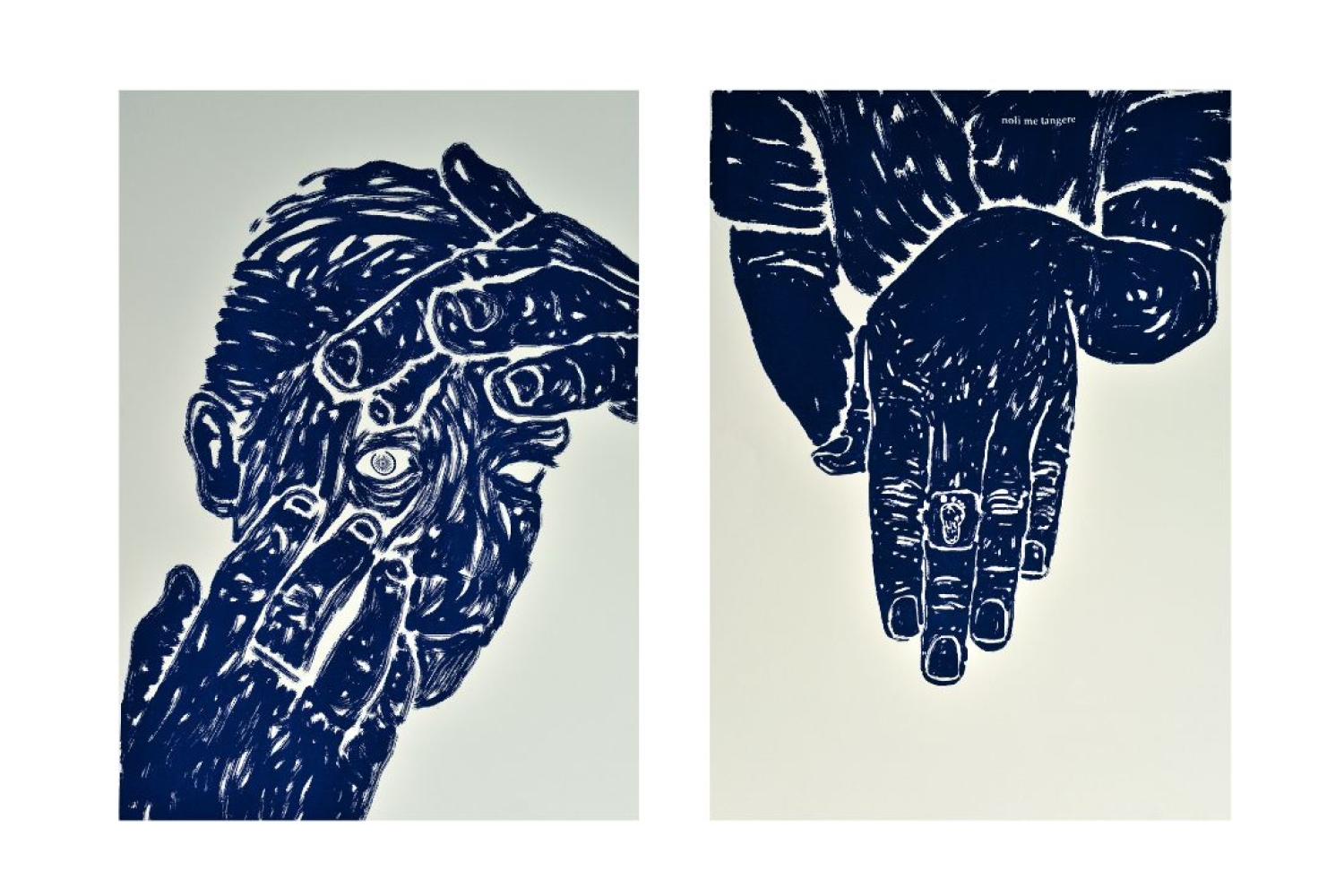
Portrait By The Sea (left) | Noli Me Tangere (right)

Portrait By The Sea (left) | Noli Me Tangere (right)
Around 500 years ago, the utopian city of Begumpura (land without sorrows) was imagined by poet Guru Ravidas in his poem:
Tell us about how Begumpura was born and how did you get the idea of painting this imagined city.
The idea of Begumpura is borrowed from the work of Ravidas, the saint-poet from the 15th century who was also from the Dalit community. He envisioned Begumpura, literally, the city without sorrows, as a casteless utopia. That such a pioneering imagination of a utopian city is so deeply intertwined with the annihilation of caste becomes an instruction manual of sorts for me in the artworks. His imagination is as potent and relevant even now, with caste dictating every sphere of life even today. The subjects of this imagined city would be free from the shackles of caste in all ways, and since such a possibility is yet to even remotely arise, all of the artworks I've created are fieldnotes in speculation.
Why do you choose to use only blue colour for your art? How does your style helps you to convey your meanings?
I chose the blue (and white) colour template because of its association with the Ambedkarite community. I see myself as a conceptual artist who works across disciplines, so choosing this colour was an almost inevitable decision since it places my work firmly within the anti-caste, Ambedkarite genealogy even as I work across mediums and/or drawing styles, immediately hinting to the visual idiom of the movement.
Tell us more about the colonial and brahminical ethnography of Dalit-Adivasi communities and how you challenge it in your artworks.
This is where the 'fieldnotes' bit of the show's title comes in. Almost every casteist bias toward Dalit-Adivasi communities, that were prevalent prior to the intervention of the colonial ethnographers (and eventual rulers) in the 18th-19th century get codified during that period. The ethnographers often sought the 'learned men of Hindoostan' to assist them in their Orientalist ethnography projects, projects that would eventually lay the foundation for the British administrative and legislative codes. These 'learned men' were almost always Brahmin or Upper Caste landed gentry who managed to slip in their own caste biases regarding each community that was ethnographized and in a very circuitious way, these biases are still present through the fabric of governance and legislation in India today. I see the 'Fieldnotes from Begumpura' project expanding much beyond the current set of artworks and actively engaging with these fieldnotes that were produced through the matrix of colonialism and brahmanism. The artworks in the show invoke this depiction of oppressed communities through the lens of ethnography, and I attempt to manipulate and subvert this brutal ethnography through a counter-ethnography of Begumpura.
What do you think about the current Dalit-Adivasi representation in the art world? Is there anything you would like to see changed/improved?
There is a very lengthy list of frustrations that I, much like every Dalit-Adivasi artist working now, has toward our representation in the art world so I won't get into all of it to save you space haha. Until very recently, the art world, including almost all "political art" had little to no mention of the biggest governing factor in Indian everyday existence, that is, caste. When it was mentioned, it was from the perspective of an outsider looking in at the oppressed caste communities, as if to suggest that it is only we, the oppressed, that are representable and responsible for the doctrine of caste, when in reality it is the other way around. In this manner so much 'conscientious' Indian art ended up replicating the colonialist-brahmanical ethnographic gaze even when it sought to depict us. Thankfully, the situation is shifting a little now with the entry of artists and curators from within the community, and because questions around identity and representation are becoming inescapable in the global art landscape.
Do you think art (both in general and with respect to your own) has the capability to impact our present realities?
As an artist from an oppressed community, I have no option but to believe that art does indeed have the capability to impact our present reality and help us forge a better future. What would have all of it been for, otherwise?
Words Paridhi Badgotri
Date 27.09.2023